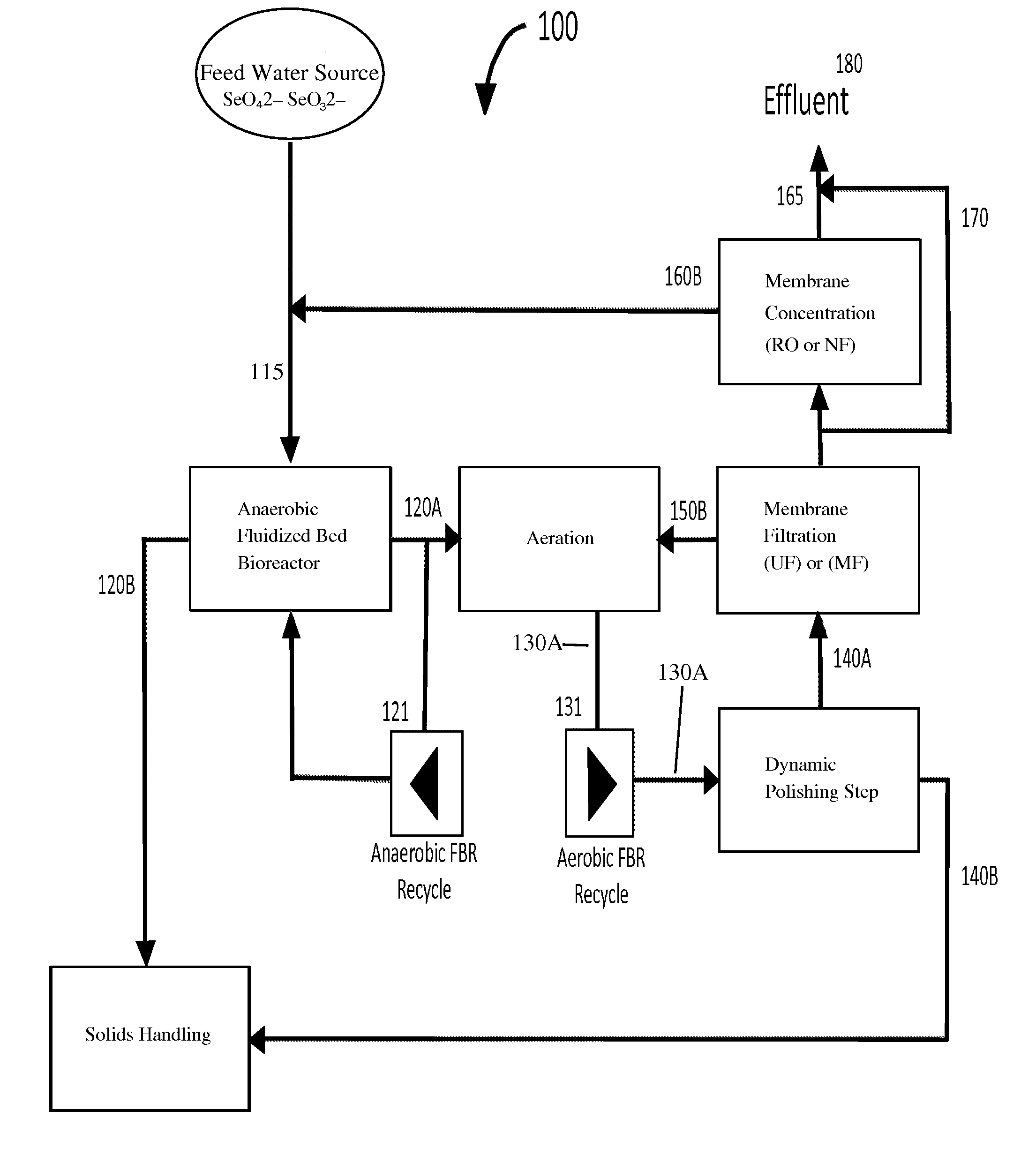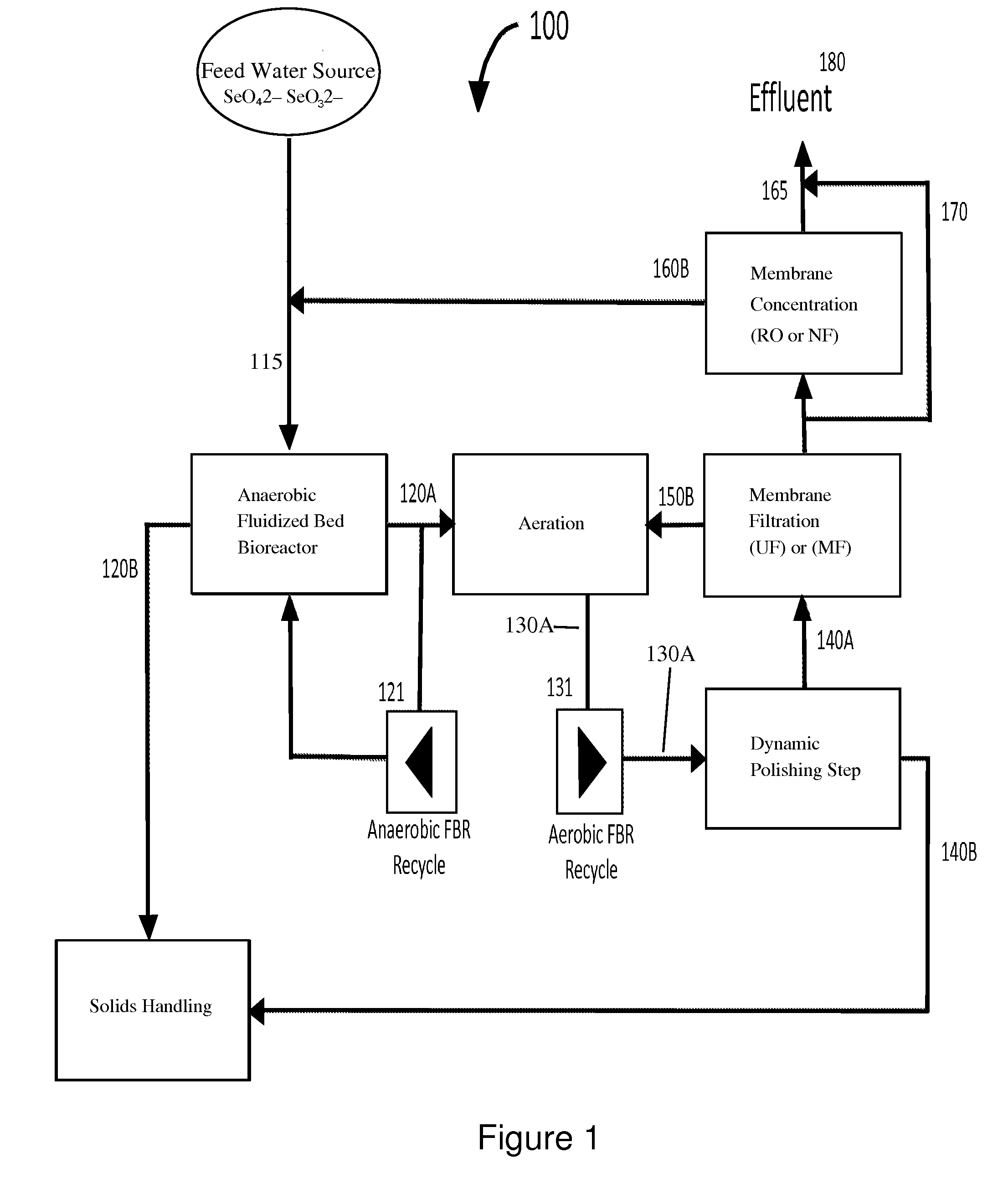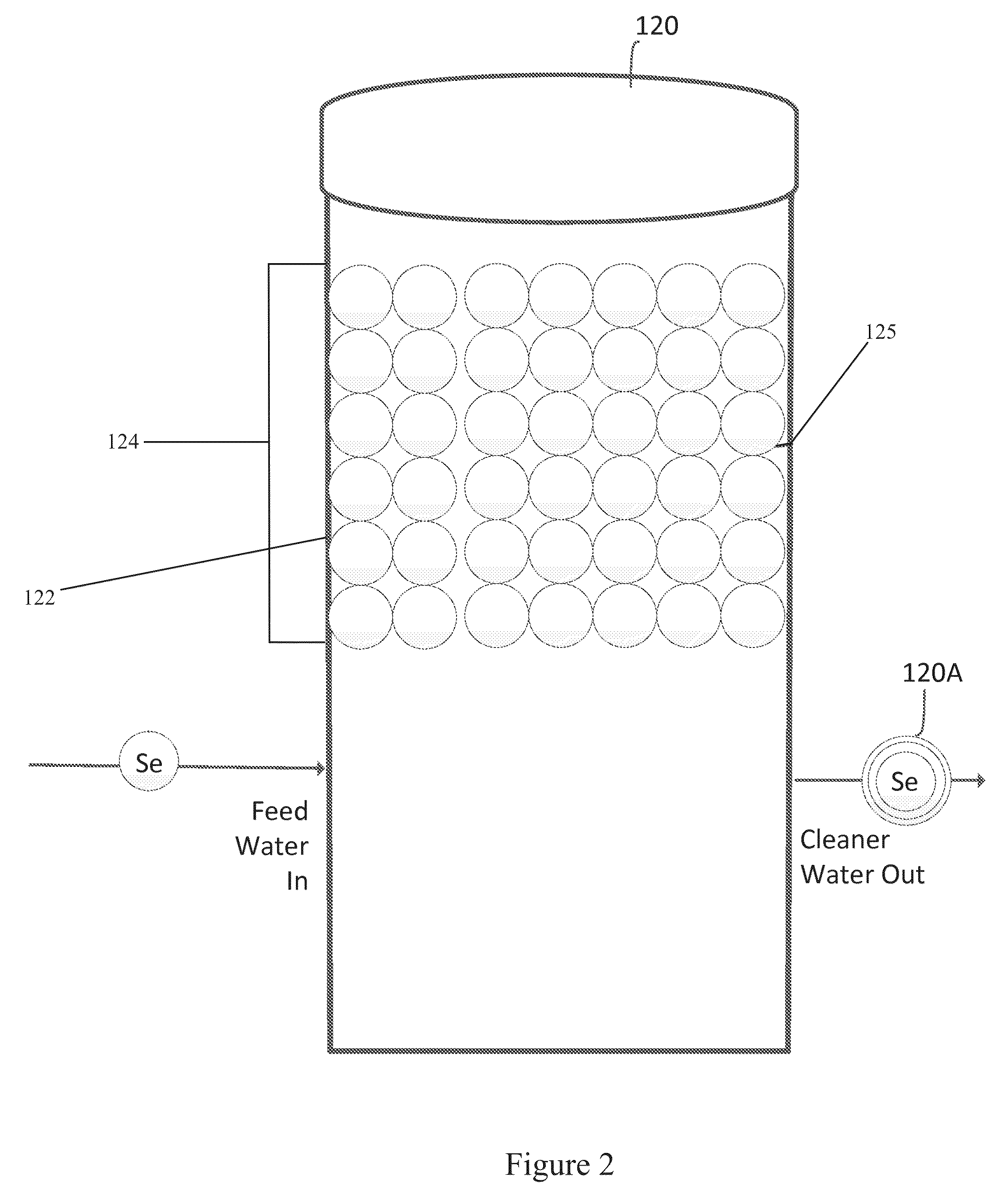Water Treatment System and Method for Removal of Contaminants Using Biological Systems
a biological system and water treatment technology, applied in the field of water treatment systems, can solve the problems of high levels, mutations and deaths, and human health harm, and achieve the effects of reducing hydrostatic pressure, reducing hydraulic head, and reducing effluent contaminants
- Summary
- Abstract
- Description
- Claims
- Application Information
AI Technical Summary
Benefits of technology
Problems solved by technology
Method used
Image
Examples
Embodiment Construction
[0073]The invention and accompanying drawings will now be discussed so as to enable one skilled in the art to practice the present invention. The drawings and descriptions are exemplary of various aspects of the invention and are not intended to narrow the scope of the appended claims. It should be understood that while some of the embodiments are shown operating in sequential steps or series, other embodiments operating multi-threaded processing, interrupt processing, and or multiple processors would also fall within the scope of the present invention.
[0074]Turning now to FIG. 1, a biologically active multi-stage water treatment system 100 for removing soluble selenium from water is shown in accordance with one or more aspects of the present invention. The biologically active water treatment system 100 uses reduction occurring during anoxic bacterial respiration to reduce water contaminants from a soluble form to a precipitate form, which may be more easily removed from the water. ...
PUM
| Property | Measurement | Unit |
|---|---|---|
| pressure | aaaaa | aaaaa |
| pore size | aaaaa | aaaaa |
| pore size | aaaaa | aaaaa |
Abstract
Description
Claims
Application Information
 Login to View More
Login to View More - R&D
- Intellectual Property
- Life Sciences
- Materials
- Tech Scout
- Unparalleled Data Quality
- Higher Quality Content
- 60% Fewer Hallucinations
Browse by: Latest US Patents, China's latest patents, Technical Efficacy Thesaurus, Application Domain, Technology Topic, Popular Technical Reports.
© 2025 PatSnap. All rights reserved.Legal|Privacy policy|Modern Slavery Act Transparency Statement|Sitemap|About US| Contact US: help@patsnap.com



